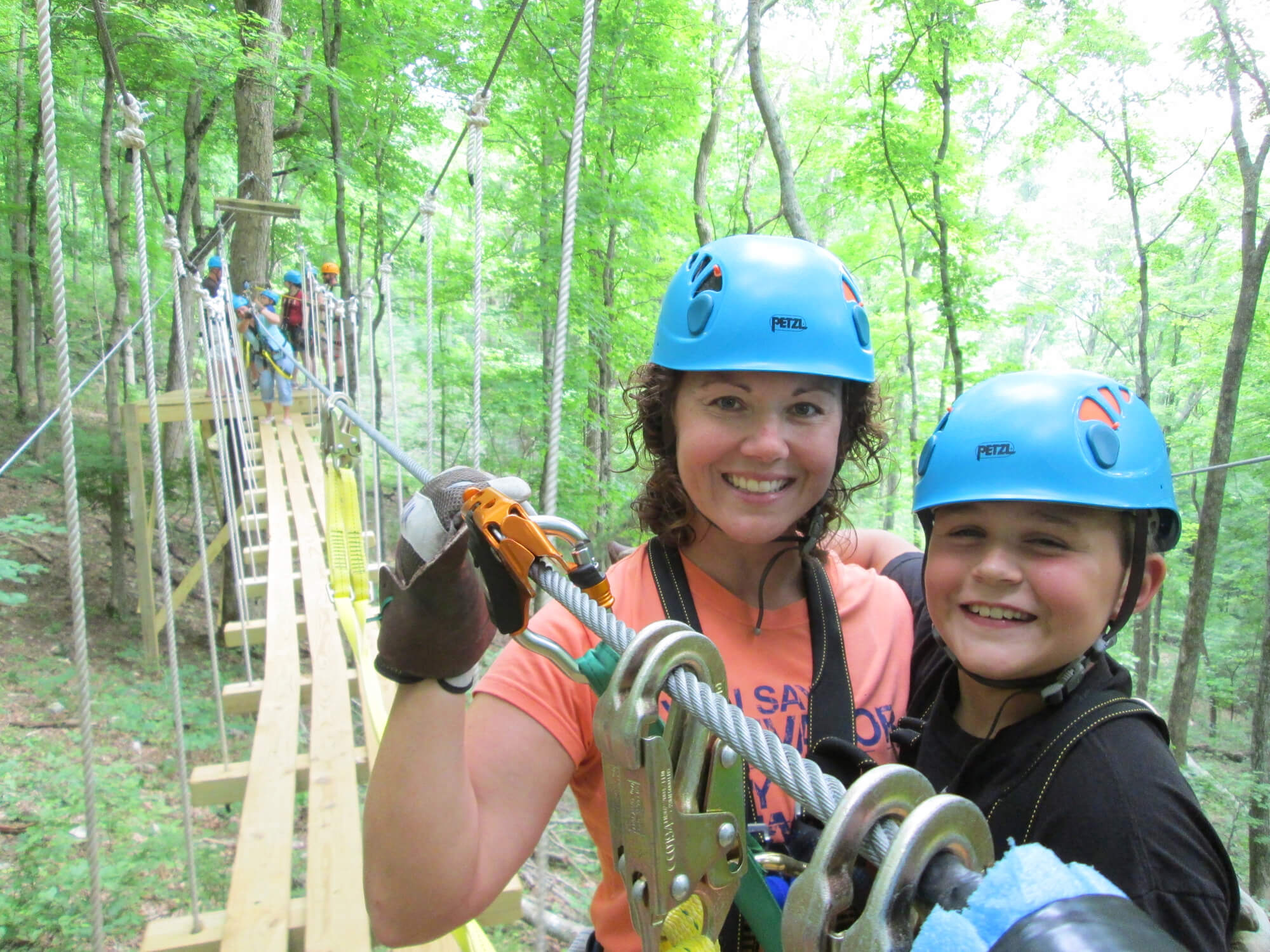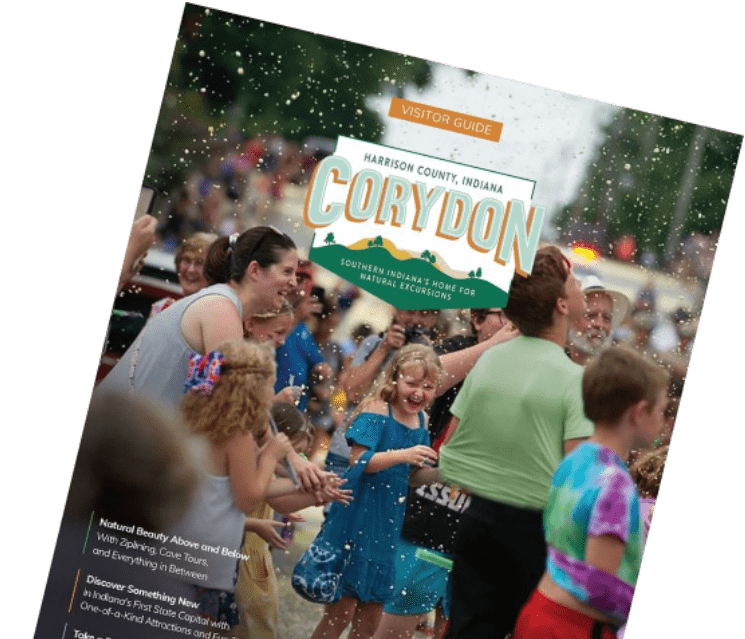Check Out These Historical Landmarks in Indiana to Explore Year-Round
The Hoosier state is chock-full of fascinating historical sites from every era of history – even prehistoric! Although history can seem dry when it is presented in history books, it comes alive when tourists have the chance to explore real historic landmarks in Indiana on the very places where history was made. From exploring ancient Indian Mounds in Anderson to visiting the elk tree where Indiana’s Constitution was written in historic Corydon, exciting adventures await you in every corner of Indiana. Here’s a look at 11 great historic sites in Indiana to visit.
Soldiers’ and Sailors’ Monument: Indianapolis

No visit to Indiana is complete without a visit to one of its most important historic sites in Indiana. The Soldiers’ and Sailors’ Monument in Indianapolis was the first in the United States to be dedicated to the common soldier. The enormous monument is 284 feet high and located in the heart of downtown Indianapolis. Dedicated on May 15, 1902, the monument originally honored the Indiana veterans of the Civil War. It was then expanded to include veterans of the Revolutionary War, The War of 1812 and its territorial conflicts, the Mexican-American War and the Spanish-American War. The monument was designed by Bruno Schmitz and took 13 years to complete.
The Soldiers’ and Sailors’ Monument is the centerpiece of Monuments Circle, the main gathering place in Indianapolis. It is surrounded by retail shops, such as the South Bend Chocolate Factory, and cultural institutions like the Hilbert Circle Theatre and Indianapolis Symphony Orchestra. The monument is decorated as a giant Christmas tree during the holiday season.
Corydon Capitol State Historic Site

Indiana’s transition from a Western territory to a state is a fascinating time in Indiana history. To learn about this era, visit Indiana’s first state capitol in Corydon, a must-see on a tour of historic landmarks in Indiana. The Corydon Capitol State Historic Site commemorates many of the state’s most significant events, including the drafting of the first state constitution. The 43 delegates met to work out the details of the state’s founding, but the heat was so extreme they found it was cooler to meet outside. They drafted the Indiana Constitution under an enormous elm tree. Although the tree is gone, its stump remains. It is known as Constitution Elm. The stump is five feet in diameter. Indiana’s constitution was the first in the nation to ban slavery and mandate funding for public schools.
The original Indiana Capitol Building is located in downtown Corydon. The building is built in the Federal-style popular when it was built in 1816. The square building was made from limestone mined from nearby quarries. The logs are cut from the virgin capitol building, built between 1814 and 1816, is located in the heart of downtown Corydon. Workers hauled limestone from nearby quarries to erect the 40-foot square walls. The Capitol Building was opened as a state memorial in 1930 and is one of the designated historic landmarks in Indiana. Today, visitors to Corydon can take guided tours of the building as well as the nearby Governor Hendricks’ Headquarters and Indiana’s First State Office Building, also in downtown Corydon.
Leora Brown School: Corydon
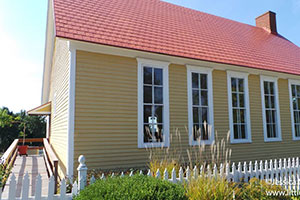
Despite laws after the Civil War which required segregated schools, Indiana’s African American community was determined to create institutions of learning. The Corydon Colored School of Corydon, Indiana was one of the first African American schools, with its first class graduating in 1897. One of its graduates, Leora Brown, went on to receive a degree at Blaker’s Teachers College of Indianapolis. She then returned to Corydon to teach at her former school, where she remained for 26 years, until the end of segregation. Brown’s descendants have restored the school and named it in her honor. The one-room structure, built in 1891, remains Indiana’s oldest African American elementary and secondary school. Today it acts as both a historical site and cultural center. A section of the original blackboard still stands. The site is a must for any visitor to Indiana’s First State Capitol.
Auburn Cord Duesenberg Automobile Museum
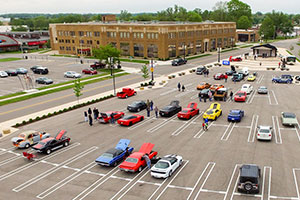
The Auburn Cord Duesenberg Automobile Museum is a testament to the era when automobiles were hand-made and may be one of the lesser-known historic sites in Indiana. The Museum is dedicated to preserving cars built by Auburn Automobile, Cord Automobile, and Duesenberg. On the grounds, there are three buildings, each representing different stages in development and construction of Auburn, Cord and Duesenberg automobiles. The site also includes an impressive Art Deco showroom that remains virtually unchanged since its debut in 1930, with its terrazzo floors, Art Deco light fixtures, and columns. The car collection includes 120 classic cars from the era, including cars from Duesenberg and Cord’s rivals, Ruxton, Lincoln, Packard, and Rolls Royce. Other exhibits include cars made in Indiana and a gallery of racecars. The city of Auburn holds a parade of the old cars on the weekend before Labor Day.
Eiteljorg Museum of American Indians and Western Art: Indianapolis

The Eiteljorg Museum of American Indians and Western Art features one of the finest collections of Native American art. Founded by Indianapolis businessman and philanthropist Harrison Eiteljorg, the Museum also collects and preserves cultural objects and art of the American West. Its collection includes artists like T.C. Cannon, N. C. Wyeth, Andy Warhol, Georgia O’Keeffe, Allan Houser, Frederic Remington, Charles Russell and Kay WalkingStick. Special exhibitions have included the work of artist Ansel Adams, Jewish life in the West, and the intersecting experiences of African- and Native Americans. Guests can enjoy lectures, tours, film events and hosts Native artists in residence. The Museum is one of only two museums east of the Mississippi that explore both Native America and the American West.
Falls of the Ohio State Park: Clarksville
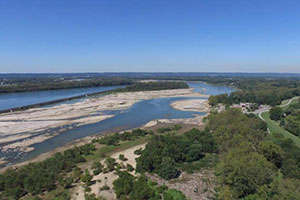
One of the key ancient historical sites in Indiana is Falls of the Ohio River State Park, where 390-million-year-old fossil beds contain some of the largest, naturally exposed, Devonian fossil beds in the world. The Interpretive Center overlooks the beds and includes an exhibit gallery and video presentation about the geological history of the area. Originally the Falls were a series of rapids over the Ohio River, but today the original falls are behind the McAlpine Dam. Visitors to the park can enjoy viewing fossils, hiking, fishing, bird-watching and picnicking. The park is open 363 days a year.
Mounds State Park: Anderson
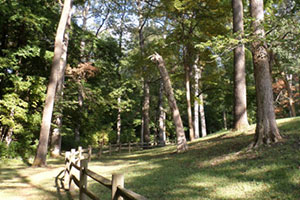
Mounds State Park in Anderson is an amazing Indiana historical landmark. The park includes 10 ceremonial mounds built by the prehistoric Adena peoples, and later used by the local Hopewell Native Americans. The earthworks include three enormous ceremonial mounds – Fiddleback, Great Mound and Circle Mound, and many rectangular and circular enclosures. Native peoples populated this area of Indiana for thousands of years, but experts believe the mounds were created in around 250 BC, with most work completed in 50 AD. That makes them older than world historical sites such as the Roman Colosseum. The site includes a Nature Center that has animal displays, a wildlife viewing room, games and other exhibits. Visitors enjoy the many events throughout the year, such as Audubon Society walks, scavenger hunts, geocaching treks and adventure backpacking.
Huddleston Farmhouse: Mount Auburn
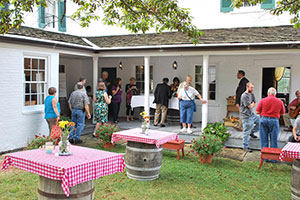
Travel in the early nineteenth century was a difficult and prolonged affair. Travelers making a trip westward on the National Road often stopped at the Huddleston Farmhouse and Inn. The Quaker property was owned by John Huddleston and his family, who offered travelers a place to sleep, eat and rest their horses during the journey. The main house is a brick, three-story structure that was saved by Indiana Landmarks, the non-profit funded by Eli Lilly. Visitors to this historic Indiana landmark can view the main house, smokehouse, two barns and spring kitchens. In addition, the Farmhouse hosts annual events like hearth suppers, which serves up food cooked over an open fire. Huddleston Farmhouse was listed on the National Register of Historic places in 1975.
Lincoln Boyhood National Memorial: Lincoln City

Abraham Lincoln was born in Kentucky but spent most of his most formative years growing up in Indiana. One of the related historic sites in Indiana is the Lincoln Boyhood National Memorial preserves the farm where Lincoln lived with his parents from 1816 to 1830, between the ages of 7 to 21. Lincoln’s mother and other relatives were buried in Pioneer Cemetery. The main building is a limestone memorial building that was completed in 1945, showing all phases of Lincoln’s life. It features exhibits like portraits of Lincoln’s family and a film about Lincoln’s boyhood in Indiana.
The site includes a Living Historical Farm, where park rangers where clothing from the 1820s and work the farm, engaging with visitors about pioneer farming and living on the Indiana frontier. Archeologists have uncovered the original Lincoln house, which is protected by a wall. A replica farmhouse is available for tours.
Benjamin Harrison Presidential Site: Indianapolis

History buffs will enjoy a trip to the Benjamin Harrison Presidential Site in Indianapolis, another Presidential stop among the historic landmarks in Indiana. Benjamin Harrison was a senator from Indiana, grandson of a former president (William Henry Harrison) and then a two-term president himself. Harrison lived in a 16-room house with a brick exterior, which was built in the 1870s. The home has historical significance because Harrison began his famous Front Porch Campaign for the presidency from his Indianapolis house. Harrison traveled the United States during the 1888 campaign, speaking to crowds in the street. Harrison renovated the home and added electricity after his term as president was over. He died at the home in 1901.
Today visitors can see ten of the 16 rooms, which have been decorated in the Victorian style popular during Harrison’s life. Nearly ⅔ of the objects in the home belonged to the Harrison family, including the 2,440 books. Researchers can access the archives of the Daughters of the American Revolution, which are also featured at the site.
Eugene V. Debs House and Museum: Terre Haute
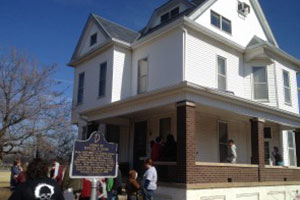
Visitors of Indiana State University can visit the Indiana historical home of American labor leader Eugene V. Debs. The Museum commemorates his life and work as the founder of the Industrial Workers of the World (“the Wobblies”) and explores his legacy as a Socialist candidate for president five times between 1900 and 1920. Visitors will learn about Debs’ advocacy for workers’ rights, children’s’ rights, women’s rights, and the cause of worldwide peace. Debs has had a lasting impact on the lives of American workers, dating from his time at the helm of the American Railway Union and continuing to his death in 1926. The home was declared a National Historic Landmark in 1966.

